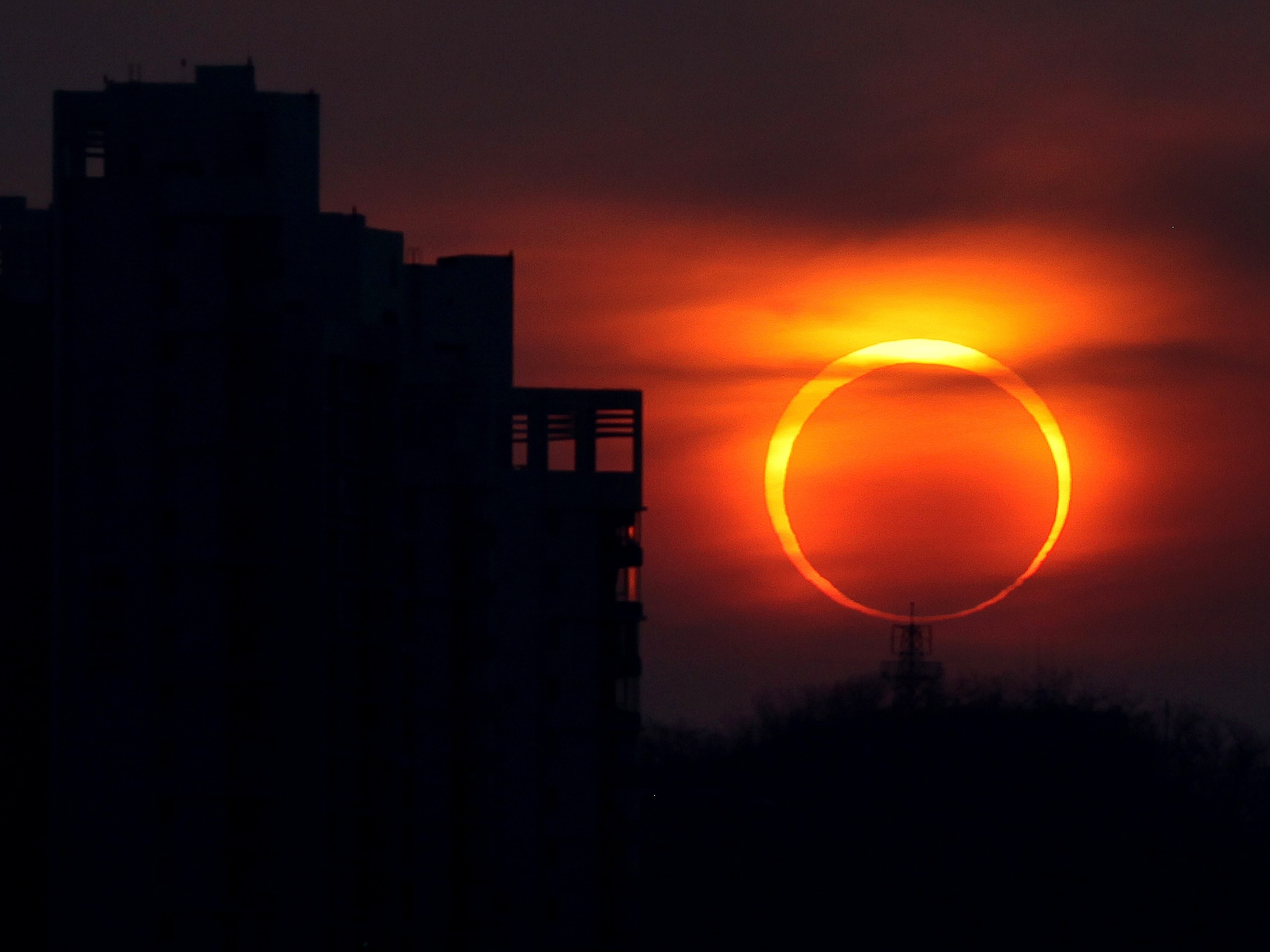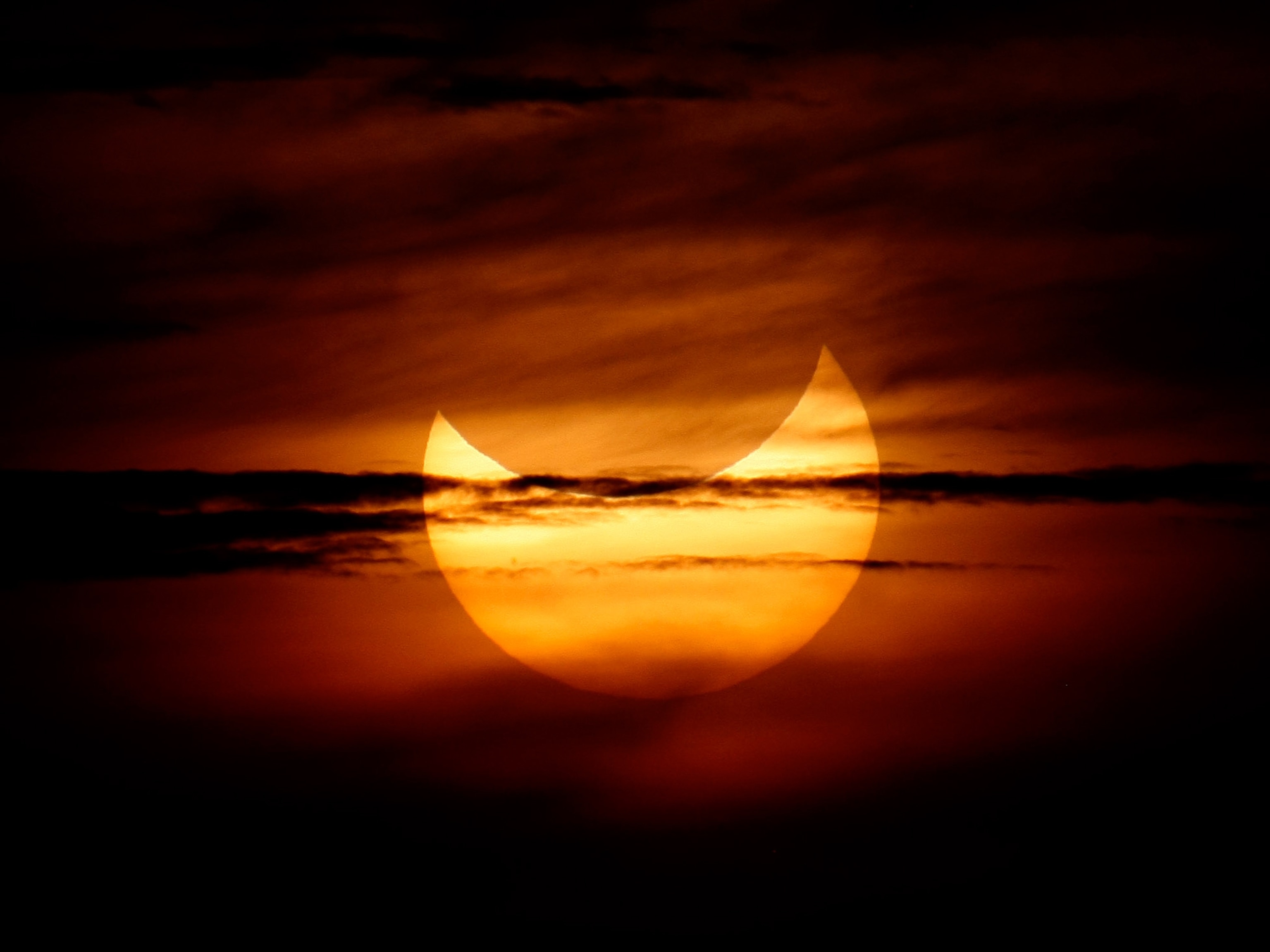
Solar Eclipse 2012: How to See "Ring of Fire" May 20
Annular eclipse to be visible from Asia, U.S. West.
This weekend, a "time traveling" solar eclipse will turn the familiar disk of the sun into a ring of fire for sky-watchers in parts of Asia and the U.S. West.
Known as an annular eclipse, the event is the first of its kind to be visible from the mainland United States since 1994. The region won't see another such eclipse until 2023.
Like a total solar eclipse, an annular eclipse happens when the moon lines up between Earth and the sun. But in this case, the dark moon's apparent diameter is smaller than the visible disk of the sun, leaving a ring—or annulus—of fiery light around the edges. (See annular eclipse pictures.)
During such an eclipse, "the path of annularity, where the full eclipse will be visible, is hundreds of miles wide and thousands of miles long," said eclipse expert Jay Pasachoff, the Field Memorial Professor at Williams College in Massachusetts.
In this path, "viewers looking through special solar filters can see a ring of sunlight around the black silhouette of the moon," said Pasachoff, who is also a National Geographic Society grantee. (National Geographic News is a division of the Society.)
The annular eclipse starts in China at local sunrise on May 21. The path of the moon's shadow then goes over Japan around 7:35 a.m., local time, and races across the Pacific Ocean.
(Also see "Eclipses in Ancient China Spurred Science, Beheadings?")
Due to the time zone change, the eclipse makes landfall again in North America in the late afternoon of May 20, starting at the California-Oregon border at 6:26 p.m. PT.
The annular eclipse then crosses southern Nevada, southern Utah, theGrand Canyon in northern Arizona, the lower-left corner of Colorado, and most of New Mexico before ending in the area of Lubbock, Texas, around sunset at 8:36 p.m. CT.
For most viewers in the path of annularity, the eclipse will last for a just over four and half minutes.
Active Sun to Add Beauty to Eclipse
Some picturesque wilderness areas—including several U.S. national parks—will be in the 190-mile-wide (300-kilometer-wide) path of the full annular eclipse.
Viewers in a broader track stretching for thousands of miles across northeastern Asia and the western two-thirds of the U.S. and Canada will instead see a striking partial eclipse.
"Unlike a total eclipse, in which the sun is entirely covered and the sky therefore gets dark, it never gets dark during an annular eclipse like this one," Pasachoff said.
"So the only loss in view from being off to the side of the zone of totality is that you won't see a complete ring and things won't appear symmetric, but you'll still be able to see a partial eclipse of the sun."
(See partial eclipse pictures.)
The best chances for clear skies during the event will be in states such as Nevada, Arizona, and Utah, added Anthony Cook, an astronomer at the Griffith Observatory in Los Angeles.
"But most of the path in the Western U.S. has better than even odds of clear enough weather to observe the eclipse," he said.
Cook also predicts some added beauty with this eclipse, since it occurs close to the expected maximum of the current solar cycle in early 2013.
"We can expect interesting moments when sunspots of various sizes will be covered by the advancing limb of the moon, then later uncovered as the moon retreats from the sun's face," he said.
(Related: "Solar Eclipses Can [Slightly] Change Weather on Earth.")
To view the eclipse safely, astronomers recommend using either a professionally manufactured solar filter in front of a telescope or camera, or using eclipse viewing glasses that sufficiently reduce the sun's brightness and filter out damaging ultraviolet and infrared radiation.
But probably the safest and easiest way to take in the eclipse is to use the pinhole projection method, Williams College's Pasachoff said.
"Punch a one-eighth to one-quarter-inch hole in a piece of cardboard and use it to create a projection of the partial or annular phases on a wall a few feet away," he said.
Eclipse as a Science Tool
The Griffith Observatory's Cook says scientists will probably also be making use of this weekend's annular eclipse.
(Also see "Eclipse Expert Makes Hot Finds in Sun's Darkest Hour.")
"Radio telescopes close to the path of annularity will make observations as the moon passes over sunspots and other sources of radio disturbances on the sun," he said.
Sunspots are linked to eruptions of intense electromagnetic radiation called solar flares, which can cause disturbances to radio communications on Earth and also hinder radio astronomers' views of the universe. (Find out more about solar storms in National Geographicmagazine.)
"Also," Cook said, "precise timing of the onset of annularity can provide data on possible changes in the diameter of the sun when compared with historical measurements."





